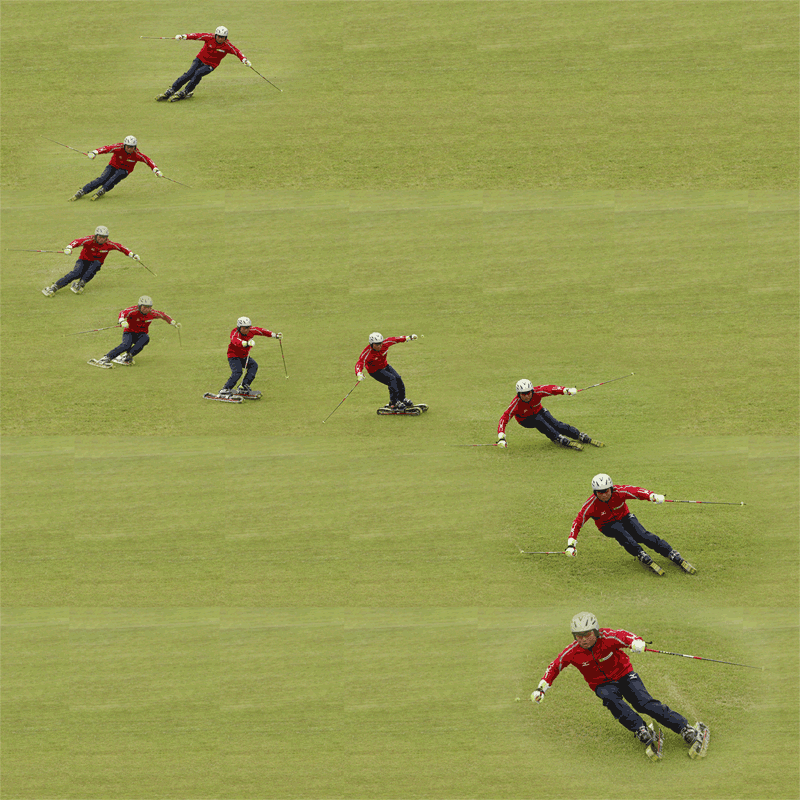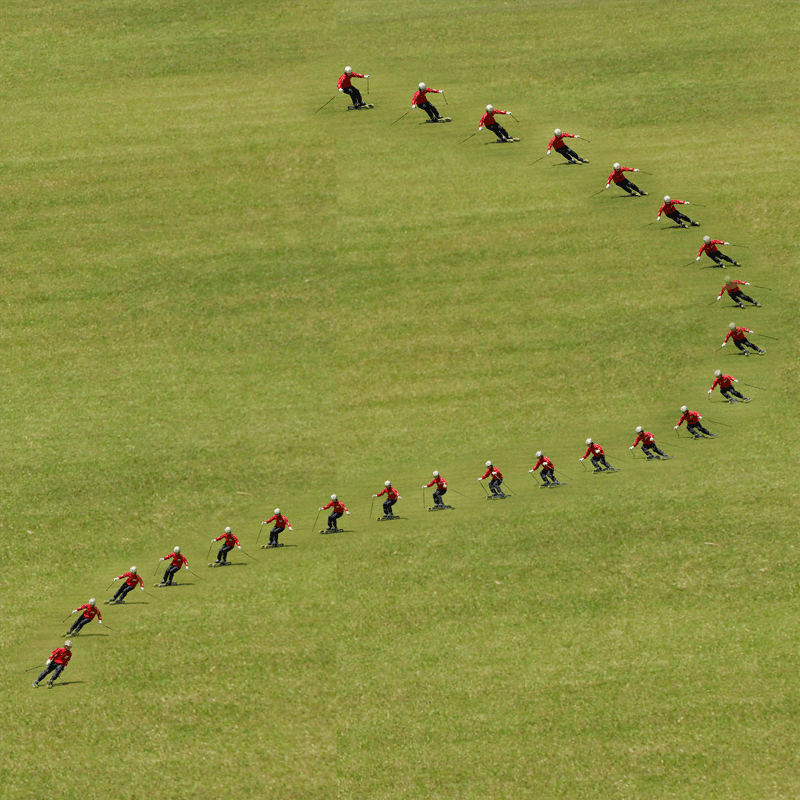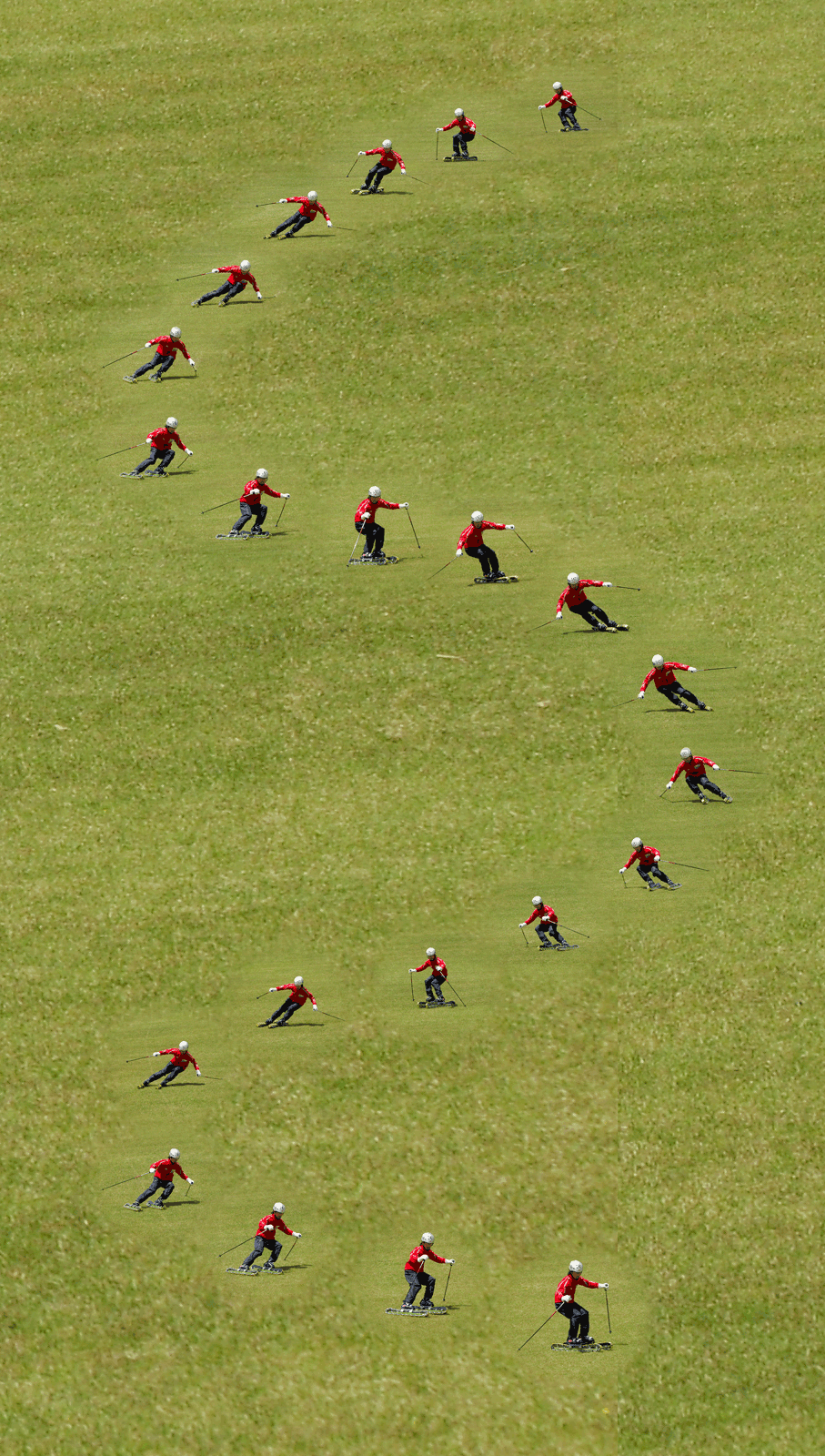Essential equipment needed for grasski
After receiving package with our grasski you will need following equipment: ski boots, ski poles, a helmet and protective elements - a helmet and a spine/backbone protector.
Ski boots
Some models of ski boots with walk/ski switches could prevent grass binding to properly close! The same problem may happen with hard snowboard boots, telemark ski boots or skialp ski boots. Compatibility with these is therefore not guaranteed! But apart of mentioned you can use any ordinary ski boots. Competitors use hardest models due to higher summer temperatures.
Ski poles
You can easily use same winter poles. Nothing special is required.
Clothing and protective elements
We recommend skiing in clothes with long sleeves and pants. It is also recommended to use gloves - older alpine gloves or work gloves are both fine. Highly recommended are protective elements such as a ski helmet (not a bicycle), a spine protector or elbow protectors - protectors for roller skates can be used.
Understanding the basics of skiing technique: posture, balance, and weight distribution
Before diving into ski techniques, let's first discuss the initial sensations of grass skiing. Grass ski turning behavior falls somewhere between inline skates and alpine skiing. To give you a better idea, I often compare the initial feeling of grass skiing to that of alpine super-G skiing, as both require some speed for proper turning. Similarly, in grass skiing, turning can be challenging without sufficient speed, and longer skis need even higher speeds to turn effectively. However, longer skis offer more stability and can navigate bumps with greater ease.
Now, let's examine the basic body posture required for grass skiing before we proceed with the actual practice.
Maintaining Correct Posture and Equilibrium in Skiing
Grass skiing requires a more precise front-to-back body positioning compared to alpine skiing. If your center of gravity is too far forward (as shown in the left picture), the skis will become unstable and shaky on grassy terrain. Conversely, if your center of gravity is too far back (depicted in the right picture), it will be challenging to initiate turns. Keeping your hands in front of your body can help maintain the proper balance and stabilize your center of gravity while learning to ski.
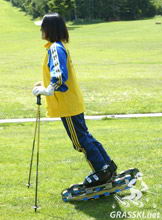
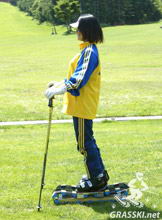
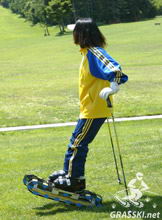
Proper hand position improves balance
Grass skis are shorter in length, so utilize your hands to maintain proper body posture and balance. Pay attention to your back's curvature in pictures, as it should resemble the stance in alpine skiing, where your back is slightly bent forward to apply the right pressure on the outer ski.
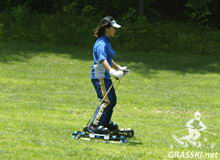
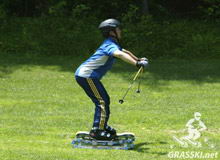
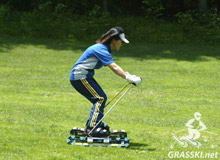
Positioning of Legs
Since its beginning, grass skiing has evolved from traditional skiing techniques. Gradually, snow skiing transformed into carving. The same principles hold true for foot positioning. Both legs and skis must remain parallel, without knee-to-knee movement or leg lifting at the start or finish of a turn. These outdated techniques don't apply to grass skiing. As illustrated, always ensure both skis are parallel and facing the same direction. Additionally, maintain a consistent distance between your skis and avoid colliding them together.
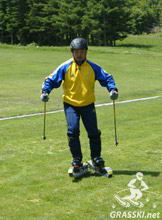
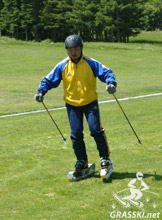
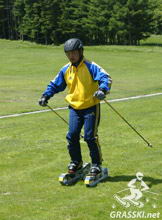
Skating
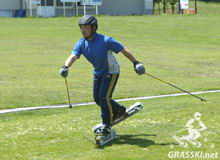
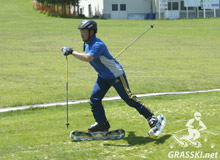
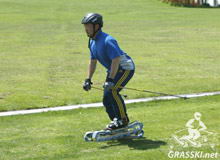
First turns
Grasski | Alpine ski |
|---|---|
| Rolling friction | Sliding friction |
| Contact surface shape dependent turning radius | Sidecut dependent turning radius |
| Shape of ash wood in grasski is responsible for turning characteristics as well as rocker/no-rocker feeling from ski | Rocker or no-rocker shape easing turn initiation |

Mastering the snowplough: the foundation of all skiing techniques
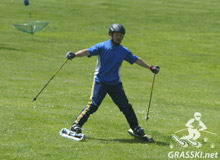
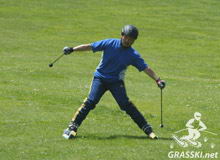
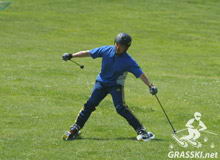
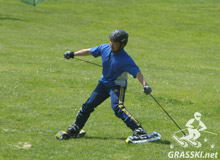
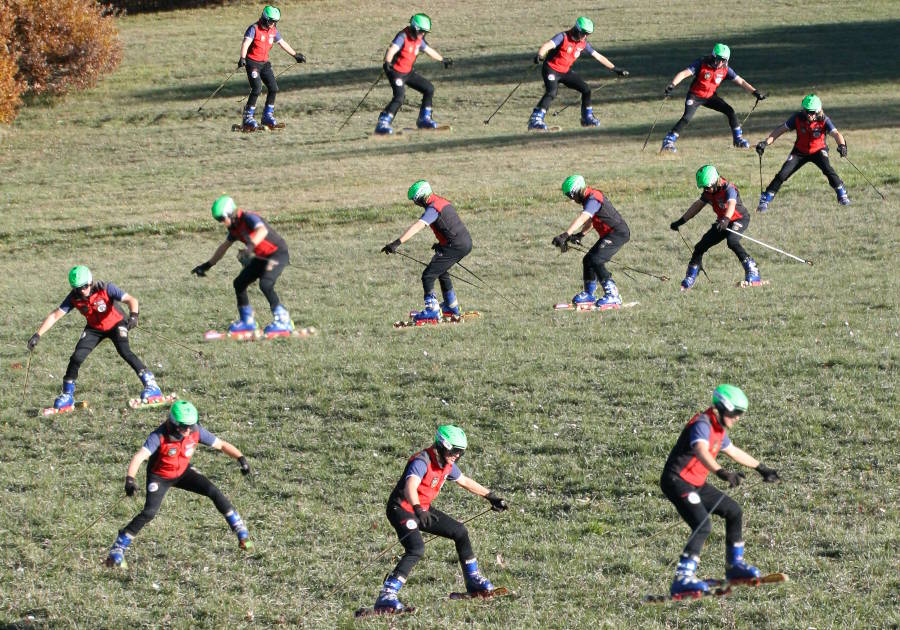
Managing Your Speed While Learning to Ski
Mastering Skiing without the Use of Poles
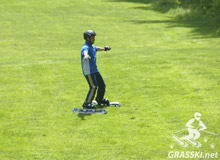
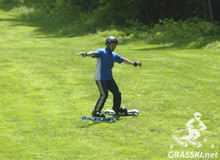
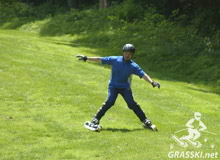
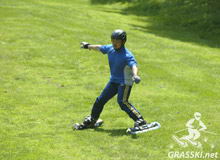
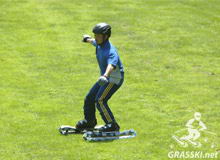
Mastering Mid-Level Turns
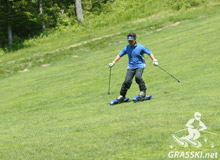
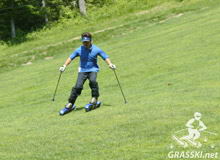
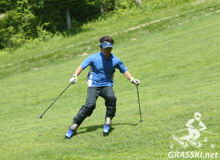
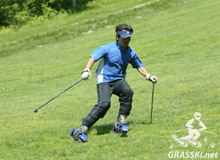
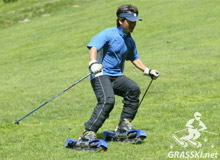
Improving Turn Speeds
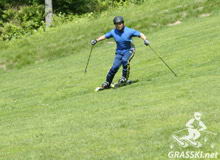
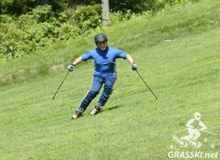
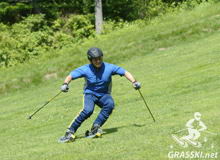
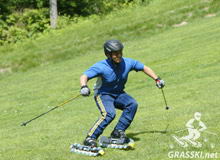
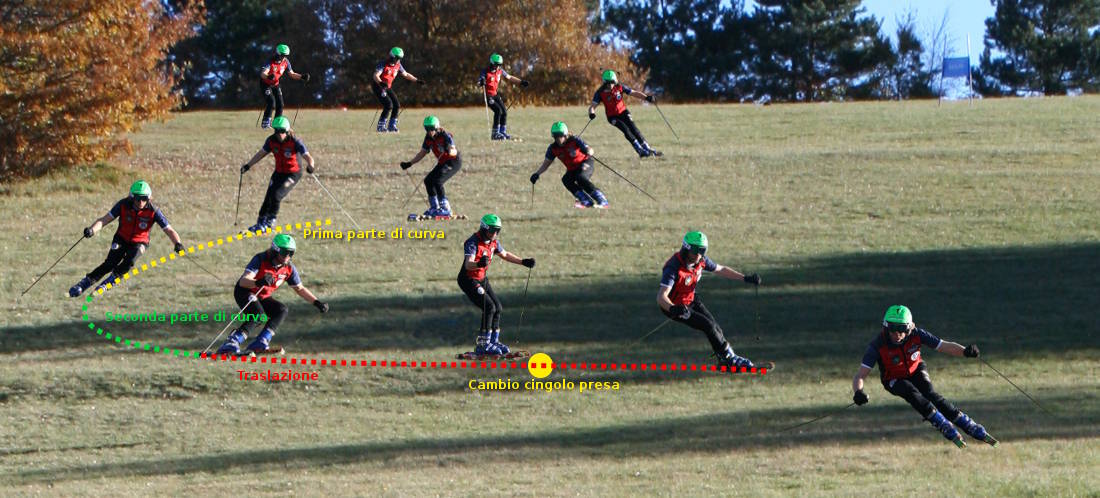
Mastering Turns for Intermediate to Advanced Skiers
Mastering True Carving
In this racing skier's movements, you can easily observe that their legs move almost parallel to each other, even when turning. This indicates that traditional techniques, like bringing knees together, are no longer relevant in contemporary carving and grass skiing. Along with this evolution, there is a shift in weight distribution on the legs. Instead of placing the entire force on the lower legs as taught in beginner lessons, modern skiing allocates 60% of the pressure on the lower ski and 40% on the upper ski. By partially distributing your weight on the upper ski, you gain more stability on uneven terrain – resulting in less ski curling and a smoother ride.
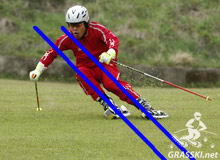
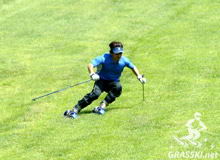
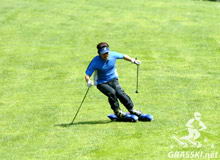
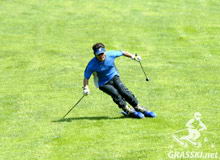
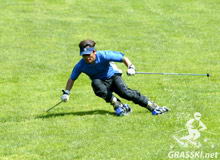
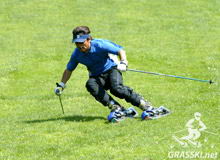
Navigating through turns
Reiterating fundamental guidelines for enhanced comprehension in the context of ski education.
Rule One: Master the clean carving turn on edges
Grass skis don't easily skid due to their construction, making it challenging to stop and control a skid. A clean carving turn performed on the edges helps you maintain control by shifting your weight between your legs and skis.
Rule Two: Maintain proper body posture and balance
Grass skis come in sizes ranging from 65-110 cm, with shorter sizes for children and students. Adult and junior sizes start at 80 cm. Balancing on grass skis can be challenging, similar to roller skating. Leaning too far forward or backward can cause instability, leading to falls and difficulty turning.
Rule Three: Master tilting and turning techniques
Turning on grass skis is different from snow skiing due to their stiffness. Instead of bending to turn, as in snow skiing, grass ski turning is more similar to inline skating. The underside of the ski contacts the ground with a barrel-shaped surface – by slightly tilting the ski, it begins to turn.
Rule Four: Control your speed
Winter skiing allows quick turns even over short distances. Grass skiing's initial curves are slower at lower speeds due to their tilt-based turning method. However, as you gain experience and increase speed, you'll find that turning becomes faster and control over radius more precise.
Rule Five: Avoid ski-to-ski contact
During grass skiing, keep your skis from touching each other to prevent falls caused by contact between plastic elements on each ski. Protectors are mounted on the inside ski sides for added protection against accidental contact.
Rule Six: Proper lubrication is essential
Grass skis require lubrication with ecological oils such as chainsaw oil before each skiing session. Frequent use requires more frequent lubrication for optimal performance. Washing grass skis depends on dirt accumulation and slope conditions – a general rule of thumb is to wash them when you feel they're slowing down.
